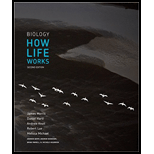
Concept explainers
To determine:
The two different physiological conditions that can produce diabetes.
Introduction:
Diabetes mellitus is a group of disorders that is caused due to high blood sugar level for a long period of time. The word ‘mellitus’ means honey or sweetness. As seen in diabetic patients, the blood glucose increase and it gets secreted in the urine along with water. Frequent urination, increased thirst and hunger are its symptoms. If it is left untreated, it may cause many other complications in the body.
Explanation of Solution
There are two types of diabetes mellitus: type 1 and type 2. The difference between them is as follows:
| Type 1 diabetes mellitus | Type 2 diabetes mellitus |
| Type 1 diabetes mellitus is also called as juvenile diabetes or insulin dependent diabetes. | Type 2 diabetes mellitus is also called as adult onset diabetes or non insulin dependent diabetes. |
| In type 1, the production of insulin gets decreases from beta pancreatic cells. | In type 2, insulin is produced, but it does not show any effect to target cell. |
| This condition occurs due to the autoimmune disease in which the immune cells attack to insulin releasing cells. | This condition occurs when the target cells do not show any response against the circulating insulin. |
| This condition occurs when the pancreas is unable to release enough insulin. It occurs due to the viral infection in which the cytotoxic T cells cause the destruction of B cells. | This condition occurs when the way of blood sugar processing by the body is affected. It occurs due to the release of some substances by the adipose tissue that impairs the functioning of insulin receptor. |
Diabetes mellitus is of two types: type 1 is insulin dependent in which the production of insulin gets decreases and type 2 is insulin dependent in which the target cell do not show any response towards the circulating insulin.
Want to see more full solutions like this?
Chapter 38 Solutions
Biology: How Life Works - Standalone book
- What is behavioral adaptarrow_forward22. Which of the following mutant proteins is expected to have a dominant negative effect when over- expressed in normal cells? a. mutant PI3-kinase that lacks the SH2 domain but retains the kinase function b. mutant Grb2 protein that cannot bind to RTK c. mutant RTK that lacks the extracellular domain d. mutant PDK that has the PH domain but lost the kinase function e. all of the abovearrow_forwardWhat is the label ?arrow_forward
- Can you described the image? Can you explain the question as well their answer and how to get to an answer to an problem like this?arrow_forwardglg 112 mid unit assignment Identifying melting processesarrow_forwardGive only the mode of inheritance consistent with all three pedigrees and only two reasons that support this, nothing more, (it shouldn't take too long)arrow_forward
- Oarrow_forwardDescribe the principle of homeostasis.arrow_forwardExplain how the hormones of the glands listed below travel around the body to target organs and tissues : Pituitary gland Hypothalamus Thyroid Parathyroid Adrenal Pineal Pancreas(islets of langerhans) Gonads (testes and ovaries) Placentaarrow_forward
 Human Anatomy & Physiology (11th Edition)BiologyISBN:9780134580999Author:Elaine N. Marieb, Katja N. HoehnPublisher:PEARSON
Human Anatomy & Physiology (11th Edition)BiologyISBN:9780134580999Author:Elaine N. Marieb, Katja N. HoehnPublisher:PEARSON Biology 2eBiologyISBN:9781947172517Author:Matthew Douglas, Jung Choi, Mary Ann ClarkPublisher:OpenStax
Biology 2eBiologyISBN:9781947172517Author:Matthew Douglas, Jung Choi, Mary Ann ClarkPublisher:OpenStax Anatomy & PhysiologyBiologyISBN:9781259398629Author:McKinley, Michael P., O'loughlin, Valerie Dean, Bidle, Theresa StouterPublisher:Mcgraw Hill Education,
Anatomy & PhysiologyBiologyISBN:9781259398629Author:McKinley, Michael P., O'loughlin, Valerie Dean, Bidle, Theresa StouterPublisher:Mcgraw Hill Education, Molecular Biology of the Cell (Sixth Edition)BiologyISBN:9780815344322Author:Bruce Alberts, Alexander D. Johnson, Julian Lewis, David Morgan, Martin Raff, Keith Roberts, Peter WalterPublisher:W. W. Norton & Company
Molecular Biology of the Cell (Sixth Edition)BiologyISBN:9780815344322Author:Bruce Alberts, Alexander D. Johnson, Julian Lewis, David Morgan, Martin Raff, Keith Roberts, Peter WalterPublisher:W. W. Norton & Company Laboratory Manual For Human Anatomy & PhysiologyBiologyISBN:9781260159363Author:Martin, Terry R., Prentice-craver, CynthiaPublisher:McGraw-Hill Publishing Co.
Laboratory Manual For Human Anatomy & PhysiologyBiologyISBN:9781260159363Author:Martin, Terry R., Prentice-craver, CynthiaPublisher:McGraw-Hill Publishing Co. Inquiry Into Life (16th Edition)BiologyISBN:9781260231700Author:Sylvia S. Mader, Michael WindelspechtPublisher:McGraw Hill Education
Inquiry Into Life (16th Edition)BiologyISBN:9781260231700Author:Sylvia S. Mader, Michael WindelspechtPublisher:McGraw Hill Education





